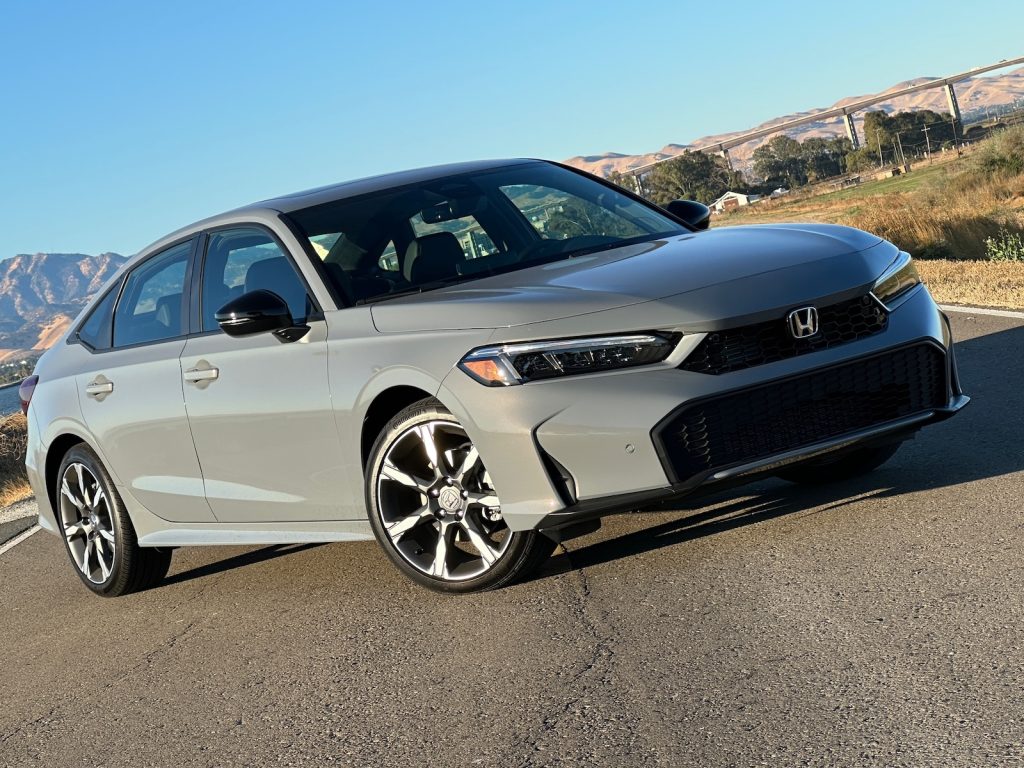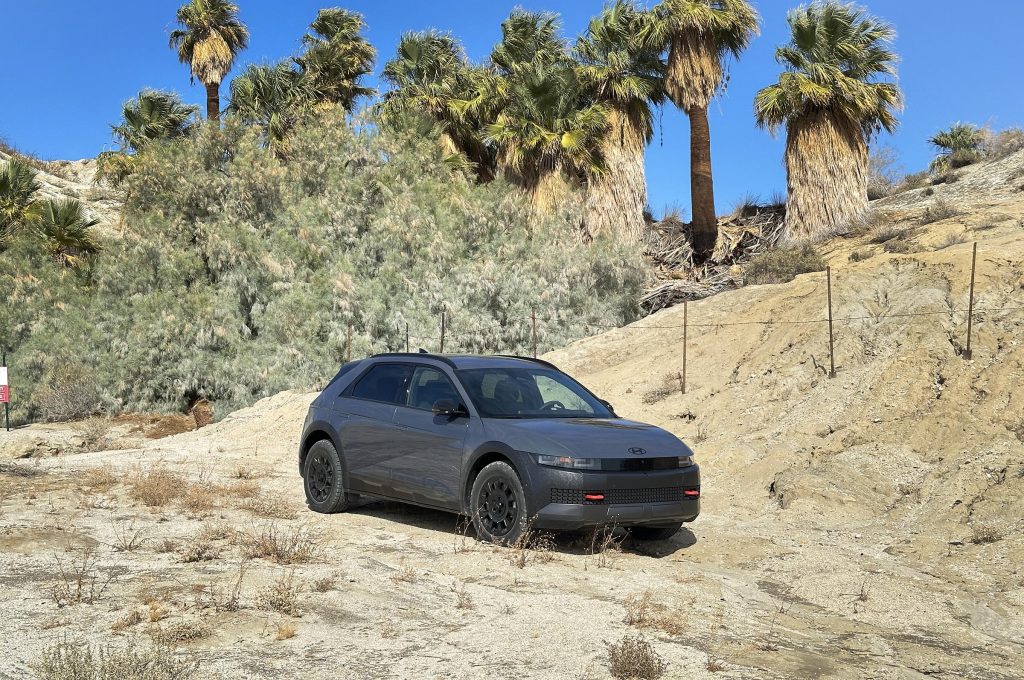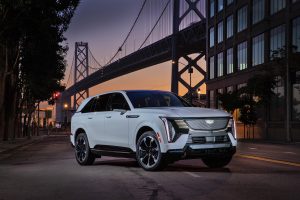“The party’s over,” said one key analyst. While domestic carmakers reported a modest upturn boost in sales for June, the U.S. auto market largely stalled out as buyers began pulling back due to price increases caused by the Trump tariffs on imported autos and auto parts. Headlight.News has more on the winners and losers.
Consumers began putting the brakes on the U.S. auto market in June as vehicle prices began rising under the weight of Pres. Donald Trump’s tariffs on import autos and auto parts.
On an annualized basis, according to analysts, June came in around 15 million, down from a seasonally adjust annual rate, or SAAR, of 17.6 million in April.
As the numbers were released results varied widely, depending on the manufacturer and brand. Chevrolet, for one, had a solid June, as well as its best first-half sales since 2019, an increase of 9%. Subaru, on the other hand, suffered a 15.8% decline in demand last month.
Tariffs take hold
“The party is over,” Jonathan Smoke, chief economist at Cox Automotive Inc. “It’s clearly slowing. It’s because of affordability getting worse and forcing what we think will be production declines to keep supply in balance.”
While a variety of headwinds have been threatening to slow the industry down, the Trump tariffs have been widely seen as the riskiest challenge to maintaining the aggressive growth pace seen earlier this year. Initially, Cox had expected to see 2025 post solid gains over the nearly 16 million vehicles sold in the U.S. last year. But Smoke has now lowered his target to just over 15 million for the full year – and as little as 14 million should the U.S. plunge into recession.
Even before the tariffs went into effect two months ago, U.S. new vehicle prices were averaging just under $50,000, near an all-time record. As a result of those new duties – which impact even American-made vehicles, vehicle prices are expected to rose by an average $2,000, AlixPartners forecast late last month.
Domestics come on strong
There were some clear winners in June, with Ford Motor Co. and General Motors Co. leading the way, analysts suggesting those automakers continue to see buyers looking for bargains on vehicles not yet saddled with tariff-based price hikes.
Ford said it “accelerated” well ahead of the U.S. industry in the second quarter, growing sales 14.2% — about 10 times the estimated 1.4% industry increase — and expanding market share to an estimated 14.3%, up 1.8 percentage points versus the first quarter.
“We blew the doors off the overall industry with our second-quarter sales,” said Andrew Frick, president, Ford Blue and Model e, and interim head of Ford Pro. “Customers continue appreciating our broad powertrain choices — gas, hybrid, electric, and diesel — digital productivity tools that save time and money, and our Ford Motor Company: From America, For America commitment.”
GM announced that its U.S. sales increased 7% in the second quarter and 12% in the 2025 first half. GM led the U.S. automotive industry in total and retail sales in the year’s first six months, with sales growth well ahead of the estimated 4% total auto industry growth.
“The investments we have made in our crossovers, SUVs, and pickups – both gas and electric – along with great execution by our employees, suppliers and dealers, have made GM the engine of growth for the U.S. industry this year,” said Duncan Aldred, GM senior VP and president of North America.
More Tariff News
- Chinese Autos, Tariffs Pose Grave Threat to Auto Industry, Says Ford CEO
- Expect to Pay $2,000 More for Your Next Car Due to Trump Tariffs
- Budget Buyers Likely to be Hard Hit by Tariffs
Imports a mixed bag
Besides the two largest U.S. manufacturers, several Japanese and South Korean carmakers also posted sales increases during the second quarter in an increasingly challenging environment.
Toyota and Honda had solid gains for the quarter.
American Honda posted a 1.5% sales increase in June despite leaner inventories of some models, with second quarter sales increasing 8.4%. Honda brand June sales increased 8.1%,on sales of 349,954, and year-to-date up 7.1% and electrified models increased 39.5%. Acura brand posts June sales of 10,912 units, with sales up 5.4% for the month.
Toyota brand June sales up 0.2 % thanks to the strong sales of the Sienna minivan. Toyota’s June electrified vehicle sales of 80,189, up 7.5 %, and second quarter sales up 7.1%.
Nissan, Subaru falter
On the downside, Nissan and Subaru faltered as the threat of higher tariffs appeared to slow down shipments of new vehicles across the Pacific, leaving dealers struggling.
Nissan brand sales dropped by 6.1% in the second versus the prior year. The automaker’s Infiniti luxury brand saw sales slide by 12.7%.
Subaru of America reported a decrease of 15.8% compared with June 2024. SOA also reported year-to-date sales of 321,775, a 0.2% downturn versus the same period in 2024.
Koreans keep the momentum going
Hyundai’s second quarter sales climbed 10%, and June total sales increased 3%.
“We just wrapped up the strongest first half in Hyundai’s history, driven by sales growth across our lineup,” said Randy Parker, president and CEO of Hyundai Motor North America. “We’re proud of our progress in the current market and ready to carry that energy into the second half of the year,” Parker said.
Kia America set an all-time first half volume record of 416,511 vehicles, an 8 percent increase over the same period last year.
“In the face of uncertain market conditions, Kia delivered a record-breaking first-half sales performance, a milestone made possible by the continued interest from consumers in our well-designed, technologically advanced lineup,” said SeungKyu (Sean) Yoon, president and CEO of Kia North America and Kia America.
Genesis Motor America is reporting 6,823 total sales in June 2025, a +21% increase vs prior year and a best-ever June monthly achievement for the brand. This concludes the brand’s best-ever first half sales achievement with 37,361 total sales, an increase of 17% from the first half of 2024.
Tesla troubles
Several automakers – notably Audi, BMW, Stellantis and Volkswagen have yet to release their second-quarter results.
Tesla, meanwhile, is due to issue its own global tally on Wednesday.
For the second quarter ended June, Tesla is expected to deliver 394,380 units, according to 23 analysts polled by Visible Alpha. That would be a drop of more than 11% year-over-year, and would follow a 13% decline the company reported in the previous quarter, according to the web site Seeking Alpha,
The automakers has been on a downward slope for much of the past 18 months, a slide worsened by protests and boycotts triggered by CEO Elon Musk’s turn to the political hard right – along with his early role in the Trump administration’s Department of Government Efficiency.
But while the numbers have been off in all key markets through May, Tesla did get at least a bit of good news on Tuesday, with a trade group reporting year-over-year deliveries in Spain rose 61% in June.
Paul A. Eisenstein contributed to this report.
















0 Comments